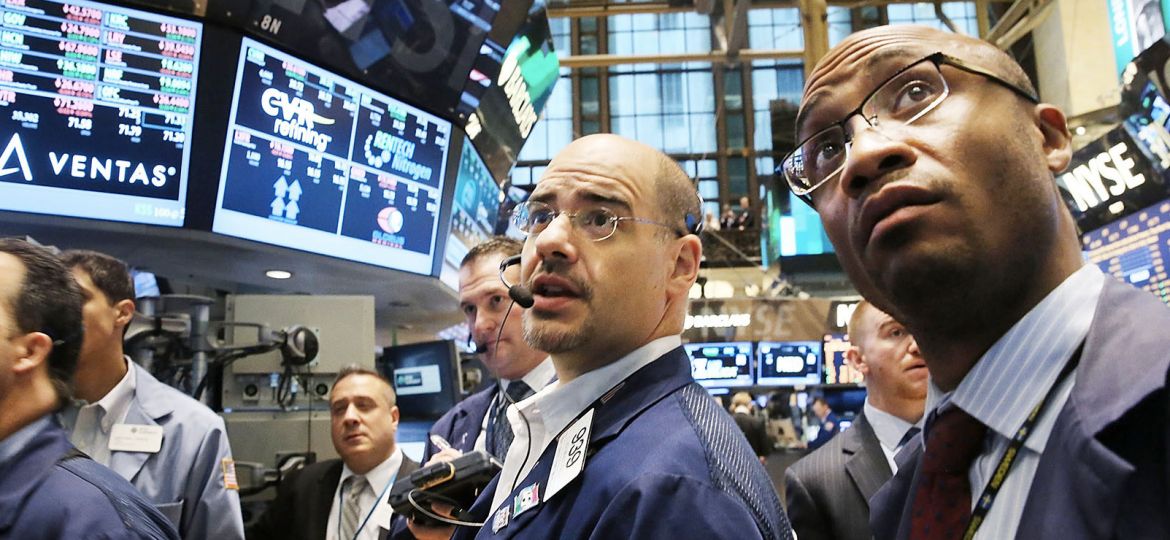
WHY THIS MATTERS IN BRIEF
- Banking is one of the world’s oldest professions, but people only have a profession if they have a job, and as Wall Street drives to full automation there are fewer jobs to go round
At its height back in 2000, the US cash equities trading desk at Goldman Sachs’s New York headquarters employed over 600 traders who bought and sold stock on the orders of the investment bank’s largest clients.
Today there are just two left and automated trading programs have taken over the rest of the work, supported by 200 computer engineers explains Marty Chavez, the company’s deputy CFO and former CIO at a Harvard symposium on automations impact on the financial services sector held last month.
The experience of Goldman’s New York traders is just one early example of the rise of automation, that’s increasingly taking over Wall Street, that began with the rise in computerised trading, but which has accelerated over the past five years, moving into more areas of finance that were once dominated by humans.
Now, Chavez, who will become Goldman’s new CFO in April, says other areas of trading such as currencies and even investment banking are all moving in the same direction and it’s bad news for the banks thousands of employees.
According to Coalition, a UK firm that tracks the industry, nearly 45 percent of all trading is now done electronically, and not to be left out Wall Street’s hastily rolling out new automation technology, such as artificial intelligence (AI) to replace its high earners.
The average compensation for bankers in sales, trading and research at the world’s twelve largest global investment banks, which includes Goldman, is over $500,000, with over seventy five percent of all Wall Street compensation going to these highly paid “front end” employees.
Ironically for the highly paid staff who survive these automation projects automation will make them even richer.
“The pay of the average managing director at Goldman will probably get even bigger, as there are fewer lower level people to share the profits with,” says Babson College professor Tom Davenport.
Complex trading AI algorithms first began to replace human traders where the price of what’s being sold was easy to determine on the market – including the stocks traded by Goldman’s old 600. Now areas of trading like currencies and futures, which are not traded on stock exchanges but have prices that fluctuate, are coming in for more automation as well, and in order to execute these trades, companies are busy designing algorithms that emulate as closely as possible what a human trader would do.
Goldman Sachs has already begun to automate currency trading, and has consistently found that four traders can be replaced by one computer engineer, now, out of a total staff of around 9,000 people, about one third of Goldman’s employees are computer engineers.
Next, Chavez said, will be the automation of investment banking tasks, work that traditionally has been focused on human skills like salesmanship and building relationships. While he says those “rainmakers” won’t be replaced entirely, Goldman has already mapped 146 distinct steps taken in any Initial Public Offering (IPO) of stock, and many are “begging to be automated,” he says.
Reducing the number of investment bankers would let the bank save tens, maybe even hundreds of millions of dollars, great for the firm, not so great though for the employees these new systems replace. Investment bankers working on corporate mergers and acquisitions at large banks like Goldman make on average $700,000 a year, and in a good year they can earn far more, but all that looks set to change in the future – just take off a seven and four zeros.
Chavez himself is an example of the rising role of technology at Goldman Sachs. It’s his expertise in risk that makes him suited to the task of CFO, a role more typically held by accountants.
“Everything we do is underpinned by math and a lot of software,” he told the Harvard audience.
Goldman’s new consumer lending platform, Marcus, a debt consolidation and advice platform that’s run entirely by software, with no human intervention, and more recently Goldman has filed patents to put – and automate – FX trading on the blockchain.
Chavez explains that Marcus was nurtured like a small startup within the firm and launched in just 12 months, and it’s a model Goldman’s going to use more and more over the coming years – housing development groups in “bubbles” in some of the now empty trading spaces in Goldman’s New York headquarters.
“Those 600 traders, there is a lot of space where they used to sit,” he said. However, for those who think Chavez himself is safe from automation, well, Bridgewater Associates, the world’s largest hedge fund with $160 Billion under management, and who are automating the entire company, might have something to say about that…
















